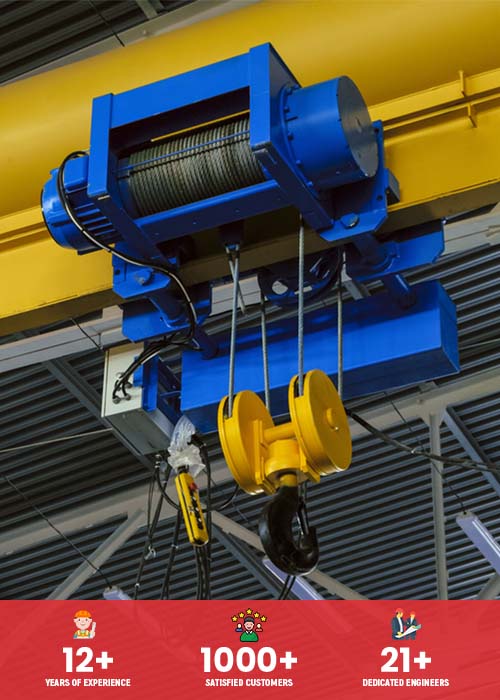Revolutionising Small-Scale Lifting Operations With Jib Cranes
Jib cranes are robust machines that have revolutionized small-scale lifting operations. They are a popular option in many different industries because of their distinctive utility and adaptability. Maximizing the capability of jib cranes in lifting operations requires an understanding of their mechanics. Jib crane manufacturers make Jib cranes with a number of essential parts that cooperate to provide effective lifting. The jib arm, hoist, trolley, and foundation are a jib crane’s fundamental parts. The jib arm, which is usually composed of steel, has a broad range of motion and extends horizontally from a vertical mast to hoist items. While the trolley allows for horizontal movement along the jib arm, the hoist, mounted on the jib arm, permits vertical movement. The entire structure is stabilized and supported by the foundation.
The history and evolution of jib cranes
There is evidence of the use of Jib cranes extending back thousands of years, to the time of ancient civilizations. They were frequently used in building and mining operations across medieval Europe. Jib cranes, dependable machines for heavy lifting, proliferated in industries and shipyards as industrialization spread.
Since their invention, Jib Cranes have evolved significantly. Their performance, design, and safety features have all been greatly enhanced by technology developments over time. Let’s examine the inventions that have transformed the use of jib cranes by delving into their past.
Basic components and operation of a Jib crane
The crane’s jib arm, which can be freestanding, wall-mounted, or placed on pillars, is its structural core. The hoist is in charge of actually lifting and lowering goods; it can be driven by electricity or by hand. The trolley, which has wheels or a motor, makes it possible for the hoist to travel smoothly along the jib arm. The foundation keeps the crane stable and from toppling over.
An operator of a jib crane employs controls that are either on the crane or the hoist. The trolley controls allow the hoist to travel horizontally along the jib arm, while the hoist controls allow for accurate lifting and lowering of cargo. Operators may easily and efficiently lift large loads with a well-designed jib crane.
The amazing benefits of using jib cranes
The capacity of jib cranes to provide precise and controlled lifting in small areas is one of its main advantages. Because of their small size, they can operate in confined spaces that would be too small for larger cranes. Also, jib cranes replace the need for labor-intensive and error-prone manual work by providing an affordable alternative for lifting and moving big objects.
Jib cranes made by jib crane manufacturers in Ahmedabad can be fitted with different attachments, like magnets, clamps, or hooks, to accommodate different kinds of loads. Because of their adaptability, jib cranes are a necessary tool in industries where load varies frequently.

Jib cranes in small-scale lifting operations
Jib cranes are essential for small-scale lifting operations due to their many advantages. They are adaptable enough to be used in a variety of industries, from manufacturing and construction to warehouses and automotive facilities, thanks to their distinctive form and functionality.
Applications of jib cranes in various industries
Jib cranes are frequently employed in the manufacturing sector for jobs like product transfers between workstations, assembly line component placement, and material loading and unloading. Jib cranes effectively manage the flow of items in warehouses, making the most use of available storage space and lowering the possibility of accidents associated with manual handling. Jib cranes help automotive plants by making engine and component installations easier, optimizing production procedures, and guaranteeing worker safety.



